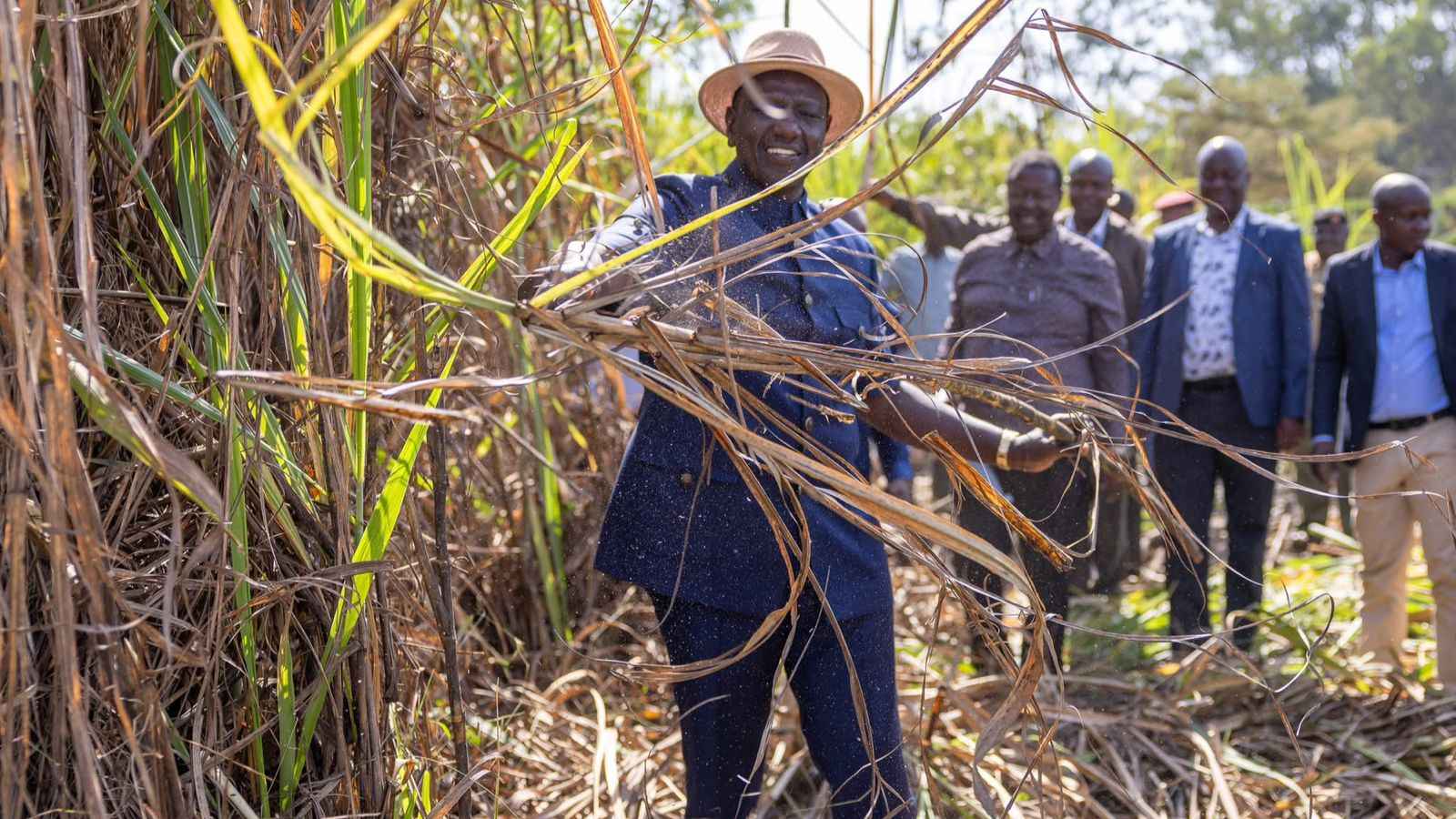The government has refuted claims that over 5,000 Kenyans working in the sugarcane sector are set to lose their jobs as part of the ongoing process to lease public sugar mills to private investors.
Speaking on Monday, October 6, Kenya Sugar Board Chairperson Nicholas Gumbo moved to calm fears among workers, clarifying that a majority will retain their positions once the mills are revived.
He revealed that 80 per cent of the current workforce will be absorbed by the incoming private millers, while only 20 per cent, mostly those nearing retirement, will exit through a structured benefits and pension plan.
"The narrative that the leasing of our public sugar mills will lead to massive job losses is inaccurate. We have structured these agreements to ensure that 80% of the current workforce will be absorbed by the private millers who will be revitalizing these factories," he said.
Gumbo noted that the government’s decision to hand over the management of the mills to private operators is aimed at modernizing the sector and improving efficiency.
Read More
He explained that the new operators are expected to invest heavily in technology and production capacity, setting the industry on a recovery path after years of stagnation.
"Once these mills run at full capacity, sugar production is expected to double to 1.6 million tonnes annually, positioning Kenya as a potential net exporter of sugar," he added.
Gumbo further explained that most of the employees set to retire are already above 50 years of age and will be compensated accordingly.
"Truth is, a majority of the workers are more than 50 years who should be retiring anyway. However, we will ensure that they get all their dues and pensions before they are released," he further said.

Gumbo also dismissed unrealistic expectations that the industry would bounce back immediately after the leasing process.
"It’s unrealistic to expect full recovery in three months. Under state management, the mills generated just Ksh20–30 million monthly, while salary obligations exceeded Ksh100 million. Now, under private operators, the mills can cover salaries and still make profits,” he explained.
Elsewhere, this comes months after the Ministry of Agriculture and Livestock Development announced the implementation of the Sugar Development Levy, effective from July 1.
In a notice on Tuesday, July 15, the ministry said all sugar millers are required to pay the levy at a rate of 4% of the ex-factory price for locally manufactured sugar sold and 4% of the cost, insurance, and freight (CIF) value of imported sugar consignments.
Additionally, the levy must be remitted by the tenth day of the month immediately following the sale of locally produced sugar or the importation of sugar.
"The Levy is payable by every miller at the rate of four per cent of the ex-factory price for locally manufactured sugar sold and four per cent of cost, insurance and freight (CIF) value of each consignment of imported sugar.
"The Levy shall be remitted by the tenth day of the month immediately following the month when the domestic sugar is sold, and by the tenth day of the month immediately following the month when the sugar was imported," the notice read.
The ministry appointed the Kenya Revenue Authority (KRA) as the collection agent for the levy.
"The Cabinet Secretary, Ministry of Agriculture and Livestock Development has appointed the Kenya Revenue Authority (KRA) as the collection agent. KRA will issue a communication advising on the mode of collection," the notice added.
The primary aim of the Sugar Development Levy is to raise revenue for revitalising the sugar industry which has faced persistent challenges including failing production.
Annual proceeds, estimated at about Ksh4 billion, will be allocated across several key areas; 40% will go toward cane development programs, another 15% to rehabilitating state-owned mills and 15% for infrastructure in sugar-growing regions.
15% will go toward research and training through the Sugar Research Training Institute, 10% to administrative costs of the Kenya Sugar Board, and 5% to bolster farmer associations.






